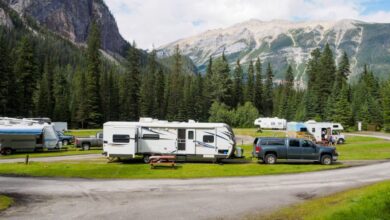Is Wild Camping Allowed in Canada
The allure of the great outdoors draws many adventurers to Canada’s vast wilderness. With breathtaking landscapes ranging from towering mountains to serene lakes, it’s no wonder that wild camping, or backcountry camping, is a popular choice for those seeking a unique experience. However, the question looms: is wild camping actually permitted in Canada? The answer is nuanced and varies by region, so let’s explore the regulations that govern this beloved pastime.
Understanding the Regulations
Wild camping can be defined as camping in areas that are not designated campgrounds. In Canada, the rules surrounding this activity depend on the province or territory, as well as the specific land management practices in place. Public lands, national parks, and provincial parks each have different guidelines, which can create confusion for those eager to pitch a tent in the wild.
In many areas, wild camping is allowed as long as campers adhere to Leave No Trace principles. These principles encourage minimizing impact on the environment, which includes camping at least 200 feet away from water sources, using biodegradable soap, and packing out all waste. However, it’s vital to check local regulations before embarking on a trip, as some regions require permits or have designated areas where wild camping is permitted.
Provincial Parks and Crown Land
Most provinces in Canada offer opportunities for wild camping on Crown land, which is public land not designated as a park. In British Columbia, for example, wild camping is generally allowed on Crown land, with the exception of some designated areas. Campers should be aware that they cannot camp within a certain distance from developed sites or private property.
In Alberta, wild camping is also permitted on Crown land, but visitors must adhere to specific regulations, including maintaining a distance of at least 100 meters from water bodies. The regulations can vary widely, so it’s advisable to check with Alberta’s government website for the latest camping guidelines.
National Parks and Protected Areas
When it comes to national parks, the rules are typically stricter. Parks Canada has established designated backcountry camping areas within each national park, and wild camping outside these areas is generally prohibited. For instance, in Banff National Park, visitors must obtain a backcountry permit to camp in designated areas. This approach helps preserve the natural landscape while ensuring visitor safety.
In contrast, some national parks in Canada, such as Yoho and Kootenay, may allow wild camping in remote areas, but only with a permit. These permits often require campground reservations or limit the number of campers to reduce human impact on the ecosystem.
Indigenous Lands
Another crucial aspect to consider is the presence of Indigenous lands in Canada. Many areas are governed by Indigenous communities that have their own rules regarding camping and land use. Before camping on or near these lands, it’s essential to seek permission and understand the customs and regulations in place. Respecting Indigenous rights and land stewardship is not only a legal requirement in many cases but also a vital part of fostering positive relationships with local communities.
Where to Find Information
To navigate wild camping regulations effectively, prospective campers should rely on a variety of resources. Provincial and territorial government websites provide comprehensive guidelines that outline where wild camping is allowed and the specific rules to follow. Additionally, local ranger stations or visitor centers can offer valuable insights and updates on camping conditions, safety advisories, and the best locations for wild camping.
Staying Safe and Responsible
When embarking on a wild camping adventure, safety and responsibility should be top priorities. Always inform someone about your camping plans, carry essential gear, and familiarize yourself with the wildlife in the area. Being prepared for changing weather conditions is also crucial, as Canada’s wilderness can be unpredictable.
Respect for nature is paramount. By practicing Leave No Trace principles and following local regulations, you can ensure that future generations will enjoy the beauty of Canada’s wild landscapes just as you did.
Final Thoughts on Wild Camping in Canada
Wild camping in Canada presents an incredible opportunity to connect with nature, provided you navigate the regulations thoughtfully. By respecting the rules and the environment, you can enjoy a memorable experience that highlights the beauty and diversity of Canada’s wilderness. Whether you’re seeking solitude in the mountains or a night under the stars by a tranquil lake, the adventure awaits, with the right knowledge and preparation.







